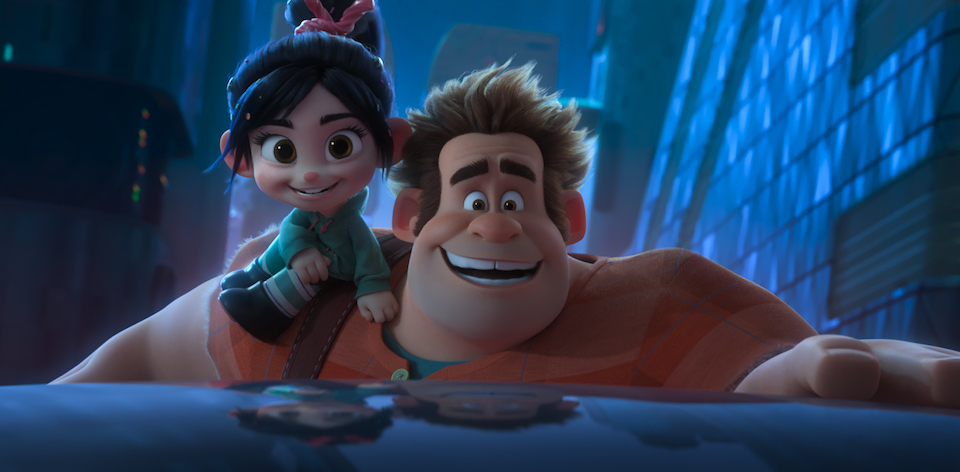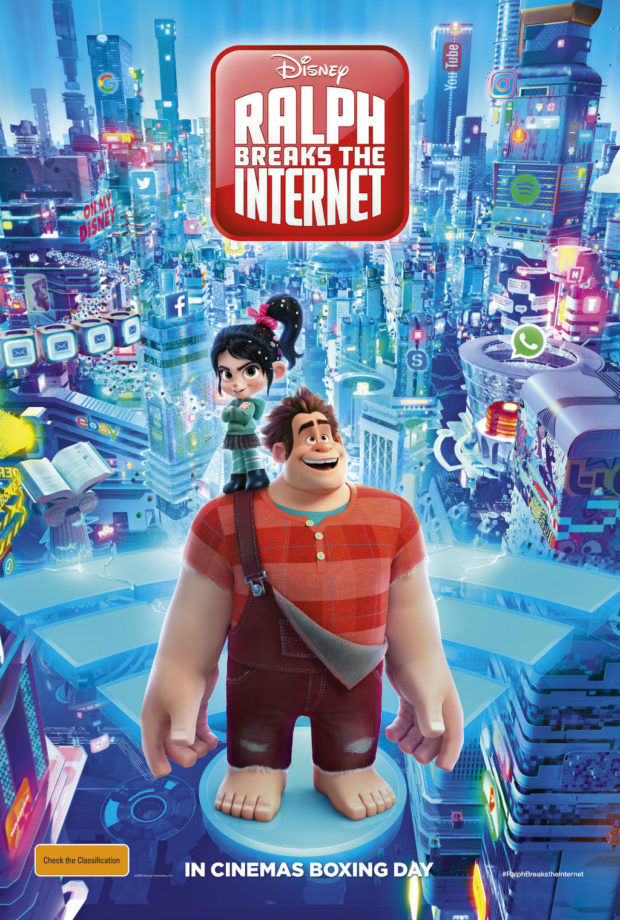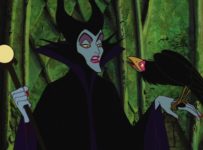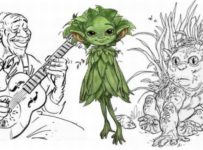We have often wondered what the ultimate Disney mashup movie would look like. Disney’s House of Mouse series gave us some idea, but the abandoned feature crossover The Search For Mickey Mouse never eventuated. RALPH BREAKS THE INTERNET, the sequel to 2012’s Wreck-It Ralph, teaches us to be careful what we wish for.
Picking up a few years after their previous adventure, Ralph (John C. Reilly) and Vanellope (Sarah Silverman) have been best buddies ever since. yet Vanellope dreams of more, and Ralph’s attempts to change her game break the machine. Working against the clock, Ralph and Vanellope must find a spare part on eBay before her game is sold for parts and Vanellope is left permanently homeless. So they enter the new Wi-Fi hub and enter the mysterious world of…The Internet.
If it all sounds a bit familiar it’s because this is basically the plot of the lacklustre The Emoji Movie, itself a poor imitation of Pixar’s Inside Out and countless others. Yet formula isn’t the only issue with this latest Disney sequel. Writers Phil Johnston and Pamela Ribon (Moana), the latter reusing elements of her Smurfs: The Lost Village plotting, have some questionable internal consistency. Indeed, the structure is more episodic than overarching, as the primary goal is completely and supplanted twice before the film is done.
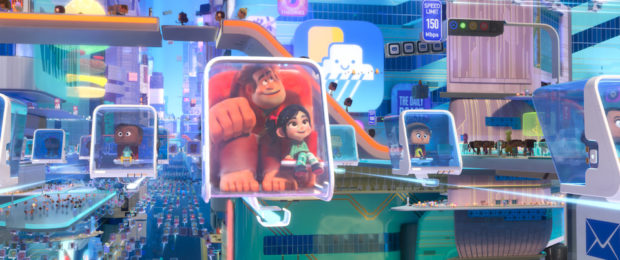
It might just be that these characters had already experienced their complete arcs. Wreck-It Ralph seemed like an unlikely candidate for sequeldom, after all, at least until you realise he’s the perfect vehicle for shoehorning in every IP the rapidly expanding Disney has in their roster. Just like The Emoji Movie, which this film shares a basic plot with, the audience is assaulted with corporate logos and the most obvious corporate insertion of a brand into a plot since Mac and Me.
As was the case with The Emoji Movie, RALPH BREAKS THE INTERNET is not driven by story so much as brand recognition. Instead of parodying Internet pop culture, directors Rich Moore and Johnston follow them by the nose. eBay is a central totem because it is recognisable to all audience members. Yet it’s also an example of seamless brand insertion in a way that most wouldn’t blink twice at.
At times, watching Ralph break the intertubes is like walking through a virtual Times Square: banners, tiles, and buildings for Google, Amazon, Fandango, and IMDb dominate the landscape. Of course, the social media family of Snapchat, Spotify, YouTube, MySpace, Twitter, and Facebook make their presence known. Ralph’s get rich quick scheme involves being in every meme imaginable, from screaming goats to Bob Ross.
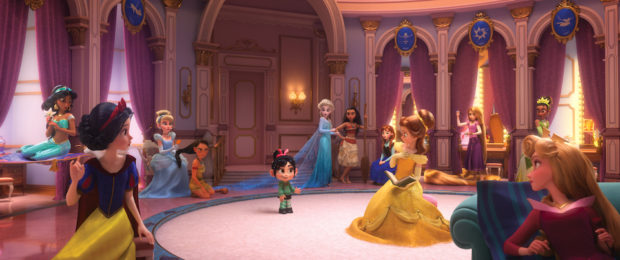
The sequence destined to be the most iconic actually has very little to do with the titular character. The dynamic duo visit the Oh My Disney website, in reality a legitimate Buzzfeed-style fan portal run by Disney. Vanellope encounters virtually every Disney princess from Disney cinematic history, encouraging them to embrace their inner leisurewear enthusiast. It’s genuinely funny, filled with sight gags, and lampoons Princess tropes. (“We can’t understand her,” they say of Brave‘s Merida. “She’s from the other studio.”) It’s also a showcase for Marvel, Star Wars, Pixar, and every other Disney imprint.
All of which is disappointing given the sheer technical achievements of the film. A major subplot involves Vanellope falling in love with the online gaming environment of Slaughter Race, a GTA style game with some Mad Max realness. The slick but gritty animation style for these sequences, especially the hyperreal and badass Shank (Gal Gadot), is something we haven’t seen from the House of Mouse before. If you look beyond the advertising, the visualisation of the Internet is teeming with details and Easter Eggs.
There’s also a musical number from legitimate Disney Legend Alan Menkin (“A Place Called Slaughter Race”) that’s part classic Disney tune with a few dashes of La La Land for good measure. It’s completely incongruous too, sandwiched as it is between at least two separate arcs in which Ralph is being an entitled jerk.
Ultimately RALPH BREAKS THE INTERNET is a film that comes at least 6 years too late. The retro charm of the original is replaced with cynical mashups of a web culture that has already done a pretty good job of lampooning itself. At the very least, it raises one important question: does Street Fighter‘s Zangief wax his body?
[stextbox id=”grey” bgcolor=”F2F2F2″ mleft=”5″ mright=”5″ image=”null”]2018 | US | DIR: Rich Moore, Phil Johnston | WRITERS: Phil Johnston, Pamela Ribon | CAST: John C. Reilly, Sarah Silverman, Gal Gadot, Taraji P. Henson, Jack McBrayer, Jane Lynch, Alan Tudyk, Alfred Molina, Ed O’Neill | RUNNING TIME: 112 minutes | DISTRIBUTOR: Disney (AUS) | RELEASE DATE: 26 December 2018 (AUS)[/stextbox]

